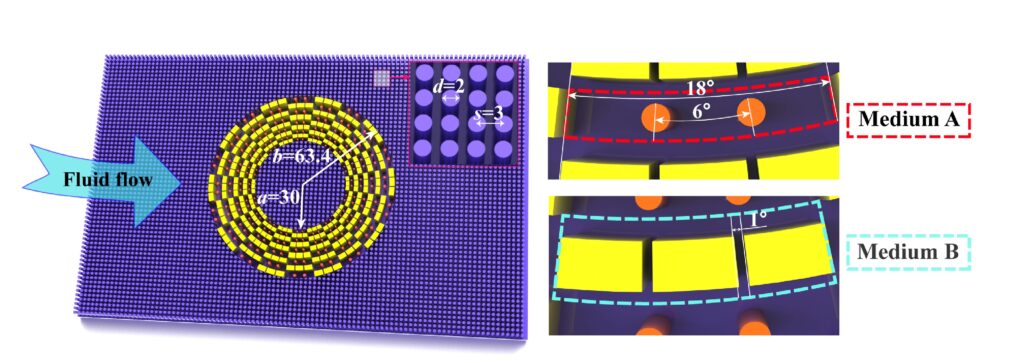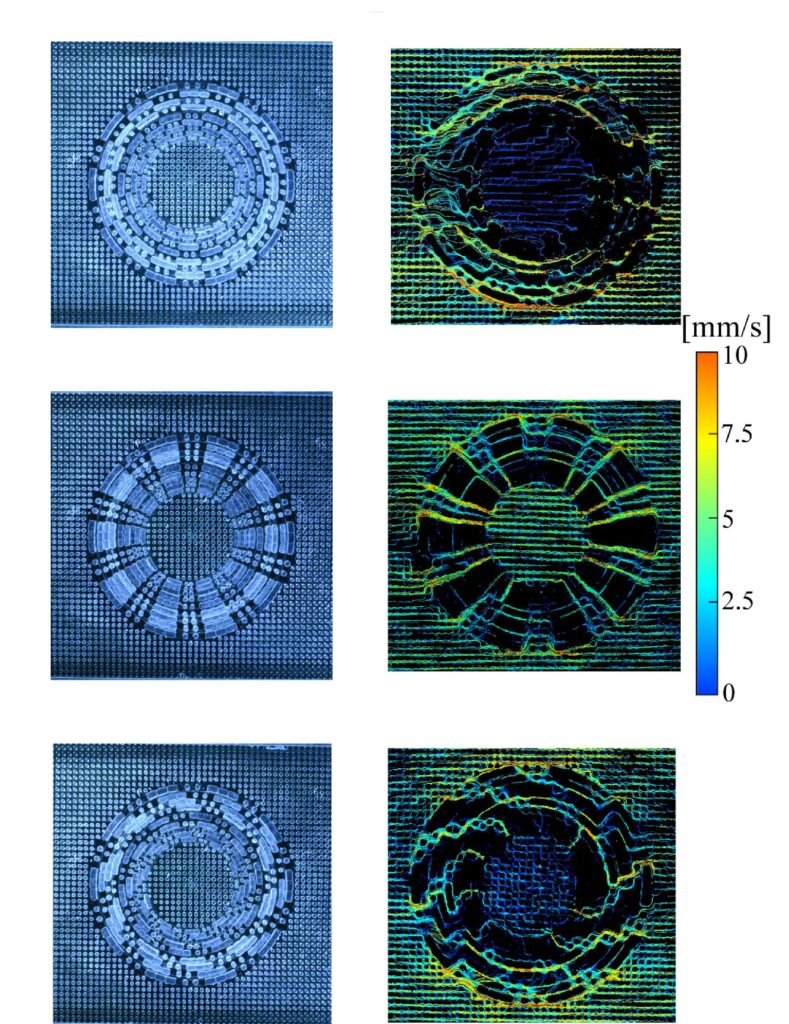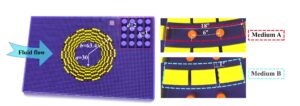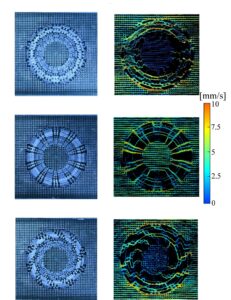CUHK
News Centre
New CUHK research takes magic of invisibility cloak and creates a mega device – potential applications span novel cell culture and drug delivery
A research team led by Professor Xu Lei in the Department of Physics at The Chinese University of Hong Kong (CUHK), in collaboration with scientists from mainland China, has invented a first-of-its-kind multifunctional metamaterial device that integrates the technology behind an invisibility cloak with a concentrator and rotator. This has potential applications in cell and tissue culture, and creates new possibilities for the advancement of tissue engineering and drug delivery. The findings have been published in the prestigious scientific journal Proceedings of the National Academy of Sciences (PNAS).
A metamaterial allowing simple switching of functions
In the Harry Potter books and films, there is a magical cloak which can instantly make any object inside it disappear. Similarly, in the ancient Chinese novel Investiture of the Gods, there are various magical items of clothing that can make people invisible. The transformation mapping theory invented by the British physicist Professor John Pendry in 2006 provides a theoretical framework to realise optical cloaks. Artificial optical metamaterials can bend light rays to go around an object, leading to invisibility.
Over the years, scientists have extended the theory to other physical fields such as sound waves, mechanical waves, water waves, heat conduction and direct current electric fields, and developed various metamaterials that are both invisible and capable of manipulating the internal field. They include concentrators, which can concentrate the field, and rotators, which can rotate the direction of field propagation. As these can be made for one specific function only, scientists have been trying to design a super metamaterial device that can integrate all these functions in one system, and simply switch across them. However, the extreme requirements of material properties have meant that such a super device has never been realised before.
Now, a collaborative team led by Professor Xu has found that the flow field of porous media can make the super device possible. Porous medium such as a pile of sand contains many pores that allow fluids to pass through. The flow is closely related to the pore size of the media. A very small variation in pore size can dramatically change the flow behaviour. Using this feature, the team manufactured a multi-functional metamaterial device in the flow field of porous media, which can be easily fabricated by 3D printing. The device consists of multiple concentric layers, each of which can be rotated independently. With specially designed handles, researchers can rotate different layers for specific configurations that control the pore size as well as the flow speed and direction to achieve the specific functions of an invisibility cloak, a concentrator and a rotator.
Potential applications in novel cell culture and drug delivery devices
The experiment from the CUHK research team showed effective manipulation of the growth rate and orientation of bacterial biofilms by utilising the functions of concentrators and rotators. They provide powerful manipulation in the internal flow field and adjustment of the flow speed and direction inside the device. As the function of the invisibility cloak allows the internal flow to be invisible to the external flow, different bacteria growth patterns can be independently cultivated in one device without affecting each other. This growth control shows promising applications in biomedical areas, such as controlling bacterial growth and cell culture.
In addition, human organs such as lungs, livers and mammary glands are porous media with various internal flows. When these vital organs get serious problems, implantation of medical devices such as stents into the affected areas is often an essential treatment. However, there are challenges in reducing the perturbation of these devices in the original flow field in the human body to avoid influencing other organs. The invisibility cloak function makes the device invisible so that it does not disturb the flow in the human body, while the concentrator and rotator functions allow the adjustment of internal flow field in the device that the drugs can be effectively delivered to affected areas. It is therefore an ideal candidate for implantable medical devices such as smart drug delivery that can control the release location and drug dosage, and scaffolds for tissue engineering.
Professor Xu said, “Our research has realised an intelligent, adjustable, hydrodynamic, multifunctional metamaterial, providing a practical design principle for the manufacture of multifunctional devices for cell culture, in vivo and in vitro biological tissue culture, and drug delivery. It also provides new inspiration for the design of this kind of metamaterial in other physical fields.”
This research was supported by the Research Grants Council of Hong Kong, the National Natural Science Foundation of China and the Guangdong Natural Science Fund. The first authors of this paper are PhD graduate Dr Chen Mengyao and former postdoctoral fellow Dr Shen Xiangying (now an associate researcher in the Department of Materials Science and Engineering at Southern University of Science and Technology in Shenzhen) at CUHK’s Department of Physics, under the supervision of Professor Xu Lei. CUHK team members from the Physics Department also include Dr Chen Zhen, Dr Lo Hau-yung, Dr Liu Yuan and Professor Wu Yilin.
The full journal paper can be found at https://www.pnas.org/doi/abs/10.1073/pnas.2207630119









